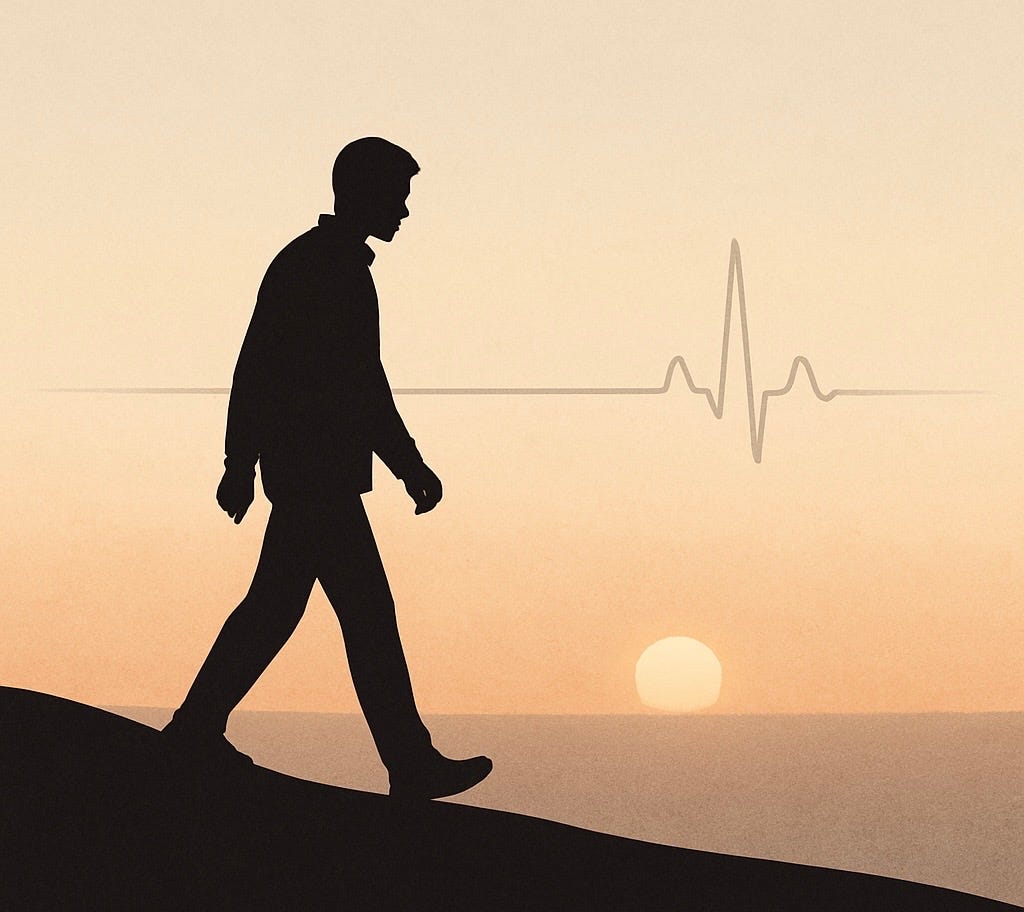The Pulse of Belonging
Rejection, Anger, and the Rhythm of Repair
The Story
There are wounds we don’t talk about. I don’t mean the physical kind or the ones that show up on a scan. I’m referring to the ones that live in the nervous system, that flare when we’re left out of a conversation, accused of something we didn’t do, or misjudged in a way that rewrites the story of who we are. I’ve been there, and my guess is that some of you, my Substack community, probably have too.
For me, it came during a time when everything felt like it was collapsing, both personally and professionally. I was misunderstood in a way that hurt deeply. The threat was more than what others thought of me, but rather what I might lose and possibly never get back. The stakes were high, the pain felt existential, I felt excluded…and erased.
Anger was my first rhythm. It pulsed through my chest like an arrhythmia that didn’t stop. As you all know, anger is a secondary emotion. Underneath it was sadness and grief, and beneath it all was fear. Fear of being judged, or worse, being permanently cast out. I felt it in my body and I couldn’t catch my breath, no matter what mindfulness strategy I tried. My gut was tied up in surgical knots, which are especially hard to untangle. My mind replayed the story over and over as my neural networks tried to find a different path forward.
The Science
Rejection activates the same brain regions as physical pain, particularly the anterior cingulate cortex. It’s more than metaphor when we say a broken relationship “hurts.” The body processes exclusion as a threat to survival. From an evolutionary perspective, that makes sense. In early human history, to be cast out from the group was to face danger alone. It meant to face those predators on the plains of the Sahara as one person, not as a tribe of many. Belonging was essential to survival.
Science has shown that when we are excluded or misjudged, the stress response kicks in. Heart rate and blood pressure spike, cortisol and norepinephrine increase, and the sympathetic nervous system goes in overdrive while the parasympathetic goes silent. The longer we stay in that state, the more our internal rhythms (cardiac, respiratory, cognitive) begin to fall out of sync. If we don’t process it, the story becomes our truth.
How Stories Shape the Self
The brain is a predictive organ. Once we experience betrayal or exclusion, it starts scanning for future threats. We become hypersensitive to cues like tone of voice, missed calls, or a certain look. We rewrite neutral interactions through the lens of past harm.
Over time, these repeated signals reinforce an inner “mental movie.” In neuroscience, this is known as long-term potentiation: the more a synaptic pathway is used, the stronger it becomes. In practice, it means that “I’m not safe” or “I’m not wanted” can become default neural tracks. Like grooves in a record, they play again and again, even when the song has changed. As we have learned, the brain is also plastic. That’s where the axons, dendrites, glial cells, and neuronal cell bodies can reroute information. The result is a new movie, with the sequel being (hopefully) better than the first.
When Rhythm Restores
When I finally began trauma EMDR (Eye Movement Desensitization and Reprocessing), I wasn’t sure what to expect. I had tried talk therapy before, but this was different. Instead of focusing on logic or analysis, it engaged somatic rhythms like left-right visual stimulation, bilateral tapping, and guided memory processing. At first, it felt awkward, and I felt dizzy looking at an object back and forth. But then something shifted.
The memories didn’t disappear, but they lost their sharp edges and began to shift from present to past. My nervous system, which had been stuck in a loop of anger and vigilance, began to soften. My heart rate slowed, my muscles relaxed, and for the first time in months, I felt like I could breathe.
What Ancient Traditions Already Knew
In many cultures, rituals of return like walking a labyrinth, chanting, or dancing were built around rhythm. When something disrupted your place in the community, you didn’t just talk it through. You moved your body with others, sang, and connected with the rhythm of nature.
A Different Kind of Strength
One of the hardest things about rejection is how it can tempt us into becoming what others accused us of. When you’re misjudged, the instinct is to defend, to prove, to harden. But sometimes the strongest thing we can do is to feel the pain without letting it calcify into resentment. To grieve what was lost and reclaim the truth of who we are, not based on what others project, but on what we choose to embody.
The Strategy
Reclaim your pulse. If you’re navigating the echoes of rejection or misjudgment, try this:
1. Notice the Rhythm: When you recall the moment of being cut off, how does your body respond? Where do you feel it: your chest, gut, or throat? What’s your pulse doing?
2. Name the Narrative: Write down what the inner voice says about you in that moment. Then ask: Is this true, or is this a survival story your brain has replayed too many times?
3. Reset Through Rhythm: Bilateral movement (like walking or drumming), coherent breathing (5 seconds in, 5 seconds out), or music that mirrors your emotional state then gradually fades. Many mindfulness apps like Calm offer EMDR sound meditations.
4. Ask the Hard Question: What would it look like to forgive, not for the sake of others, but to set yourself free from the loop?
You are not alone. The beat you carry might be bruised, but it’s still there. When you listen closely enough, it can guide you home.
One breath. One beat. One moment at a time.


